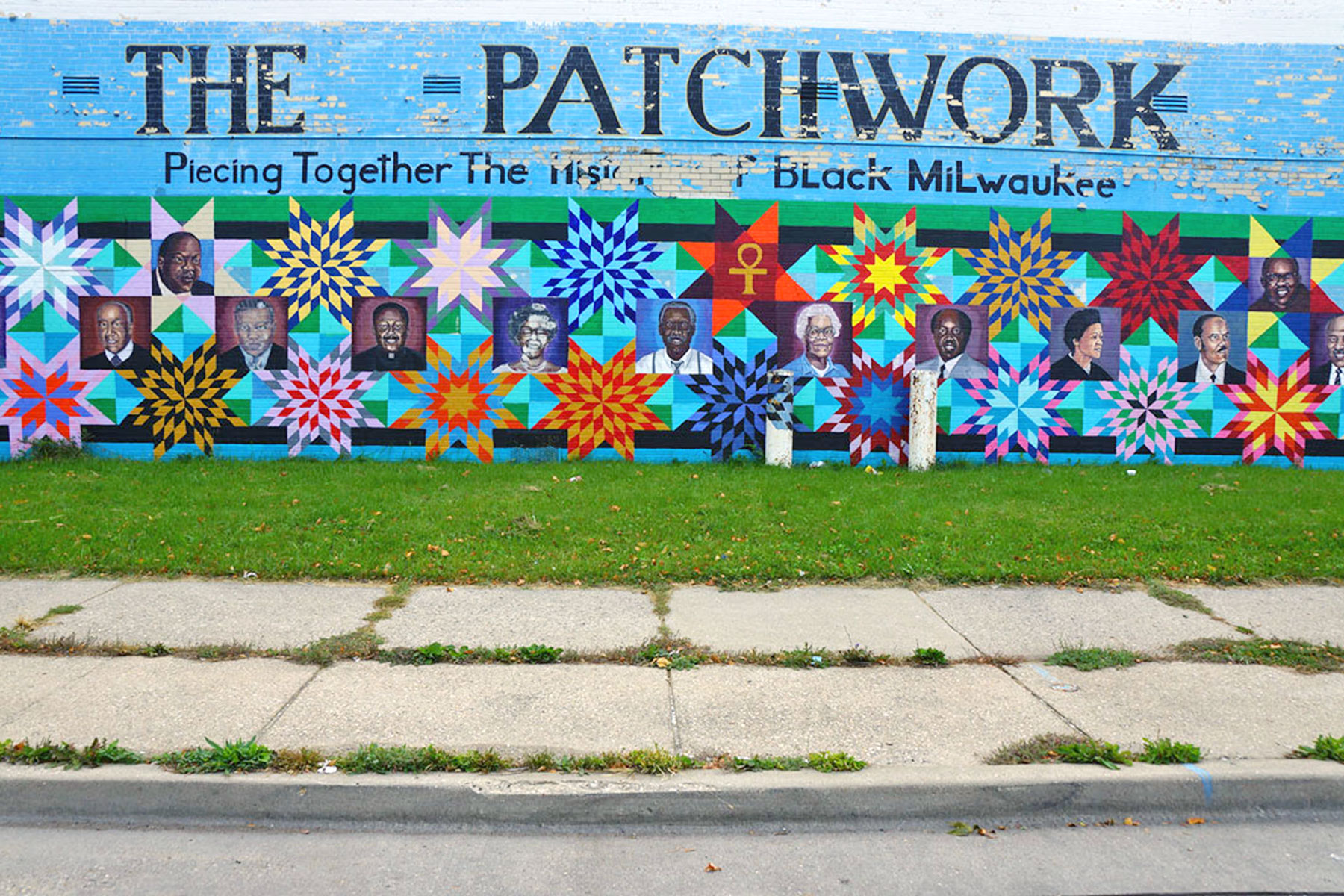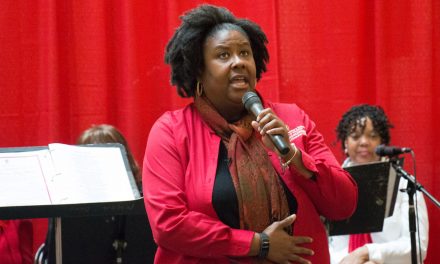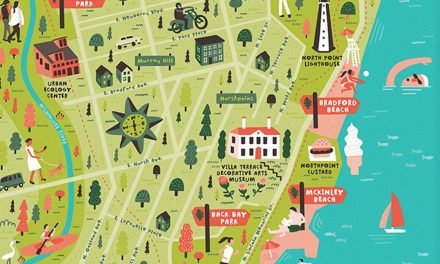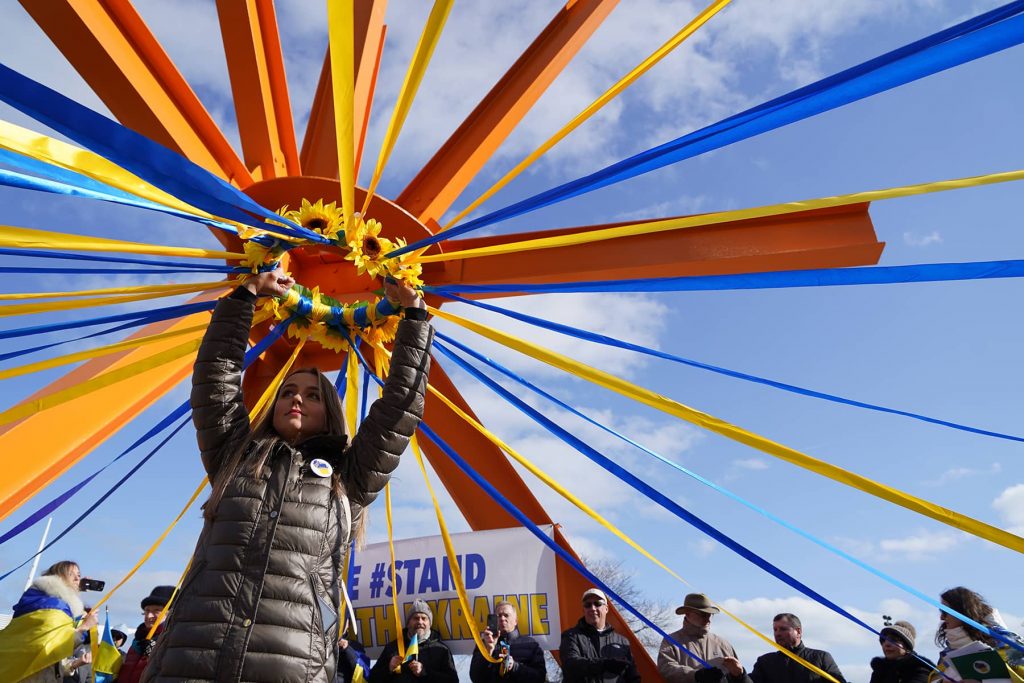
I’m a white Milwaukeean writing to other white Milwaukeeans (though I hope it’s useful for white folks elsewhere). I write with a heavy dose of humility — I’m not scoring perfect tens here and know darn well that we have to do a heck of a lot more listening. I write though because one of the simplest and most often ignored requests that people of color make of us is to talk to each other.
This past Saturday, the world watched as our city burned. By the time the sun was out Sunday morning our not-so-well-kept secret was clear for all to see… that our fires actually didn’t start this weekend.. You likely know all this… that we’re “the most segregated metro area in the country,” “the worst place in the country for black people” and that coming here is like stepping back “60 years in time.” What’s different this week is that it’s harder to sweep the truth under the rug.
As I write this, the cameras have turned away from Sherman and Burleigh. The park will reopen. We’ll do some furrowed-brow haranguing about our place in the world and move on, but not before wishing that there was something we could do.
And then, seeing nothing immediately satisfactory — no single evil law we can rail against — we’ll go back to our lives.
The thing is, I get it. We’re not bad people. We’re honestly flummoxed by the question.
Part of the problem here is that we often over-simplify what it means to be ‘most segregated.’ It’s actually not as simple as just having half the white folks move to the black side of town and half the black folks move to the white side of town. Yes, different groups ‘round here largely don’t live/socialize/worship/learn around each other. And yes, most white folks don’t actually know more than a token few folks of color. But if the problem were as simple as “we’ve got loving people over here who don’t know the loving people over there — let’s create spaces where they can dialogue and eventually move together and we’re all good” this would be solved by now. This is NOT just about relationships or about people who are fearful of each other. This is about a built-in power differential, borne into the DNA of our city.
That’s the bad news.
But here’s the good news… the depth of this mess also means that if we care about the future of our city, then far from not knowing what to do, we have enough work ahead of us to keep every one of us busy.
The list below is in three parts. Part one focuses on how we support communities of color, part two on how we work on ourselves and part three on the role we play for other Milwaukeeans. There’s levels to this.
As white Milwaukeeans, we have to actively make the choice to support communities of color (especially black Milwaukee) in their work to build power and capacity.
1. Spend your money at businesses owned by people of color.
Did you know that there is a beautiful, easy-to-navigate directory of black-run businesses in the city? It’s true! There’s also a directory of Hmong-run businesses across the whole state. The Hispanic Chamber of Commerce’s directory of businesses is being updated but it isn’t hard to ask a business that serves the Latino community if they are Latino-run or not. If we are going to create a condition where more small businesses are run by people of color, where every neighborhood in the city has a vibrant commercial district and wealth flows to-and-from everyone, not just to white folks, we have to first support what we’ve got right now.
2. Give your time and money to effective nonprofits run by people of color.
I made a list of organizations that fit both bills. I share not because there isn’t great work being done by white-led nonprofits in our city, but because we are at a moment when transferring as much capacity and resources as possible to organizations that aren’t just doing great work in communities of color but are led by them matters.
We Got This (9th and Ring Project): http://wegotthismke.com
Walnut Way: http://www.walnutway.org
Urban Underground: http://www.urbanunderground.org
United Community Center: http://www.unitedcc.org
Voces De La Frontera: http://vdlf.org
Running Rebels: http://runningrebels.org
Pearls for Teen Girls: http://www.pearlsforteengirls.com
Hmong American Friendship Association: http://www.hmongamer.org
The Coalition For Justice: https://www.facebook.com/justicefordontre
Alice’s Garden: https://www.facebook.com/AlicesGarden
3. If you own a successful business in our city, prioritize job creation in our city’s poorest neighborhoods.
As per point number one, I really want more black-run coffeeshops in town. I ALSO want our beloved Colectivo to open a branch, run by folks from the neighborhood, over at Fondy and Locust. I also desperately want a black-run corporation employing hundreds at Century City, but in the meantime I’d love one of the new white-run companies popping up out in ‘Tosa to open there too and start hiring up and down the block. And yes, there are reasons why business development in high poverty black and brown neighborhoods is a “risky” short-term investment. I’m not an economist. I’ve got a gut feeling though, that in the long-term being the “worst place in America for black people” isn’t a good investment either.
That’s just to say, there have been a set of hiring/business-location decisions that have gotten us to this place, so why not try a different set of choices to get us out?
4. When you take political action, prioritize advocacy that supports communities of color instead of predominately white communities.
Our city’s poorest communities, all of them black and brown, desperately need jobs and job training. They deserve basic investments in infrastructure and business development. The kids out at Sherman and Burleigh will tell you directly that there’s not much to do in their neighborhoods and that they feel attacked by police and teachers alike. These are the kinds of things that deserve advocacy… now. And no, not advocacy led by white people but advocacy led by people of color, supported by white people.
You see, the usual pattern is that white folks come out and mobilize for things that will either predominately help white communities (5000 signatures for bike lanes on the Hoan Bridge) or where the initial idea for activism (even if it purports to be fore communities of color) emerged from white-led organizations (those of us in education witness this all the time… shouts to those nationally working to break this cycle).
I’m not saying to not ever advocate for your bike lanes, but just that we’re all busy people so if we WANT to shift power in our city we should reserve a disproportionate amount of our activism supporting projects that have been developed by and for communities of color .
Not sure where to start? Follow and listen to the groups I listed in point number two. For example, it won’t take much reading about Common Ground before you’d discover that this past Sunday, after months of listening and organizing in near-south side neighborhoods, the veteran organizers kicked off an action for an indoor soccer facility in a neighborhood with a dearth of recreational opportunities. What’s more, they’re actively asking for help!
There is no shortage of activism or projects being led by people of color in our city, but knowing where they are involves listening rather than talking and showing up… consistently.
5. Volunteer on and support campaigns for rising political leaders of color.
Our city has never elected a person of color to be our Mayor. The same pattern holds for County Executive. And while we have elected a black Sheriff, the candidate that we inexplicably continue to re-elect makes his hay with anti-black dog whistles so unsubtle that we should probably just call them ‘actual whistles.’ If we want to disrupt that pattern it’s important to have as strong a bench of candidates of color as possible, particularly young diverse candidates with their ear on the ground in our most disenfranchised zip codes. And no, this isn’t about majority white organizations finding any black or brown candidate who supports their interest in the ‘black district.’ It’s about giving black and brown candidates across the city support because their platforms have emerged from listening to and caring about what the kids throwing rocks on Sherman care about, not based on their ideological purity on a white-run organization’s questionnaire.
6. If you live in the suburbs, petition your community institutions to ensure that people of color could move there/would be welcome there.
Did you read that ‘back in time 60 years’ article from the Toronto Star? One of the most disconcerting parts of it was the section about New Berlin: A suburban mayor receives gun shots to his car and ‘N***** lover’ notes simply because he proposed a low-income apartment complex. Again, that’s the bad news. The good news? If that’s the reality, if you’re a suburban white resident who DOESN’T want your community to be known for exclusion and hate, you have a unique power for action.
How powerful would it be if city council meetings across the burbs were flooded with demands for a city-wide diversity and equity plan? What if realtors were getting calls asking why they never seemed to drive families of color out to check out homes? And what if suburban school boards were filled with white parents concerned not with “discipline issues” as their schools diversified but instead called for more culturally responsive practices and action against opportunity gaps? It would literally flip the script.
Desegregate your home bases
1. If you work in an occupation that gives you the privilege of interfacing with communities of color, clean up your own house first.
Teachers. Doctors. Cops. Social Workers. Loan officers. Store clerks. There are so many of us whose day jobs give the incredible gift of interface with all sides of our divided community. With this privilege, though, comes an intense responsibility.
Let’s use my field (education) as an example — there is a bitter battle across the city (with the loudest voices too often being pretty darn white) between school sectors. Are you for the district? Are you for charters? Are you for voucher schools? And yes, I’ll acknowledge that there are serious policy discussions to be had here (funding, building management, etc.) that shouldn’t be downplayed.
But here’s the rub. I’ve been in dozens upon dozens of our city’s schools — district, charter and choice. And the reason why I’m not likely to raise my voice loudly for one sector over the other is because every single school in every one of those sectors has real urgent work to do when it comes to educating black and brown kids with the dignity they deserve.
I see a lot of classroom settings that are pretty darn sad, period, and a whole lot more that are ‘just OK’ where kids deserve ‘excellent and liberating.’ And, as somebody whose organization coaches teachers, I know and am completely empathetic as to why… being a decent teacher is super hard, let alone being a relationship-rich, culturally responsive teacher with a high bar for rigor. But… if it IS so hard, that means that the urgency of focusing more attention on our own houses, our own biases and our own practices, (ESPECIALLY as white folks teaching other people’s children) is at SUCH a fever pitch that I’m not sure how or why we’re focused anywhere else but our own classrooms and schools. We’ve got a lot of glass houses, so while critical friendship is great, we’re not really in a stone throwing zone. Any of us.
I gave an education example because I know it best. Goodness knows there’s a law enforcement parallel, a health parallel, a financial systems parallel, a social work parallel. All of us — we have all the time in the world, but none to spare.
2. Push your workplace to have a real plan for diversity and equity (emphasis on ‘a real plan’).
Truly diverse workplaces do a whole lot for our community. They make organizations better and smarter. They ensure a consistent transfer of economic and social power. They give opportunities for relationship-building and empathy. They’re just doper in general.
But they don’t just happen. They definitely won’t happen by opening a hiring pool, seeing that only one person of color applies and then saying “well, we didn’t have enough qualified candidates.” But they also won’t happen even if you technically diversify, if more people of color are hired but they aren’t listened to, if the way you work isn’t open to change, if conversations about equity in the workplace are limited to occasional workshops.
Building a diverse and equitable workforce is a lifelong project that starts with a long view on hiring (new approaches towards recruitment, internships, relationships with students of color at universities and even high schools), continues with rigorous, mandatory training/workshops/conversations on workplace equity, modeled by non-defensive leadership, fueled by succession plans that ensure that ‘diversity’ isn’t concentrated at lower levels of the organization… the list goes on. Most of all, it involves listening to and actually valuing the voices and experience of people of color.
3. Desegregate your news and information sources.
This one should be obvious, as long as you do so critically and constructively. Yes, it’s worth tuning into 860 AM, but you shouldn’t assume that something you hear there represents ‘the black community.’ Same too when you read the Community Journal or the Courier or, if you’re Spanish-speaking, El Conquistador. More generally though, it’s worth asking yourself, how much of where I spend my time, where I get my news and who I listen to is pretty darn white and what voices am I missing?
4. Yes, join and participate in more diverse communities, but DON’T TAKE OVER .
Yeah, it probably would do you a ton of good if you went to a church that was predominately non-white, sidled up to a bar where folks didn’t look like you and held your cookout somewhere other than Lake or Humboldt Park. BUT (and this is a big but), don’t assume that your presence is naturally a helpful or even welcome one. Yes, step outside of your zone, but be cool. If you ARE welcome in a space don’t take it over or wait to be complimented for being there. And of course, if folks say “hey, this might not be the best move for you right now” and ask you to move on, respect that.
5. Side note — a quick thought on ‘moving to a non-white neighborhood’
You might find it odd that I’ve gotten this far through a list of “what you should do” about an issue like segregation without explicitly saying “just move!” First up, as noted above, this isn’t just about whether or not white and black/brown Milwaukeeans like living together, it’s about differential power. Secondly, too often, when those power dynamics are not taken into consideration, we know full well that white folks moving to communities of color doesn’t result in integration, but gentrification.
Here’s an example. I’m a Riverwester. On one hand, I moved into a neighborhood that is less segregated than Bayview or the East Side. I’m doing good, right? But… I’m been a part of a decades-long progression of fellow white folks who’ve moved to this diverse neighborhood but primarily supported white-run/white-serving institutions. As a result, every year, Riverwest gets a little bit wealthier and whiter. So, while I WOULD love for an integrated Lindsay Heights or Clarke Square or Metcalfe Park, I don’t want those neighborhoods to undergo a few years of integration and an influx of increasingly ‘hip’ (read: white) restaurants preceding a gradual exodus of black and brown folks.
The message then? Yes, think critically about where to live, but NOT without also analyzing the institutions you’re supporting (in particular financially), your relationship with your neighbors of color… the whole kit and caboodle.
Talk with other white people. Talk with other white people. Talk with other white people. All the time.
I feel that when us white folks get advice, this one triggers intense eye-rolling. It can feel like a cop-out. I firmly believe though that loving/challenging/being challenged by other white people isn’t accessory or side nonsense, a runners-up prize for those who don’t get to hold the megaphone… it’s life or death work. In every conversation, every article, what’s clear time and time again is that people of color in our town don’t JUST feel isolated because of nasty systems at a high level but because our fear/distrust/paternalism/you-name-it as white people is visceral.
The jewelry store clerk who locks the door and calls the cops on one of the NBA’s best shot blockers will only change if his friends challenge his biases. So too for the teacher who just happens to tell all his black students’ parents that their children are “too loud” or the work team that ‘randomly’ ignores contributions from people of color, then praises those same contributions from white staffers. Every day, every single one of us makes our town less welcoming to people of color and unless we love each other enough to take that on together (humbly learning together, not competing for wokeness but also not standing for each other’s nonsense),every single other action on this list won’t do a lick of good.
That’s all to say…
You all, I love the heck out of our city. I’ve lived across the country and moving to Milwaukee was one of the best choices I’ve ever made. This town has been unspeakably good to me. And for white folks reading this, I have a feeling that it’s a pretty common assessment. It’s why we our dressers are 80% filled with ‘Milwaukee Home’ shirts. And you know what? That love matters.
We’ve got a choice to make though, because it doesn’t matter how much we love our city if the fires are still raging across town. The barrier to this becoming a community worthy of every Milwaukeean’s love isn’t a lack of work to be done, it’s our willingness to do it. It’s about our neighbors of color being trusted to lead this city to a better place and our willingness to give up the power, comfort and space that we’ve grown accustomed to taking. This is gonna be dаmn hard work, the work of a lifetime. But for those of us who love this city you know there’s no place in the world more worth it.
Garrett Bucks














